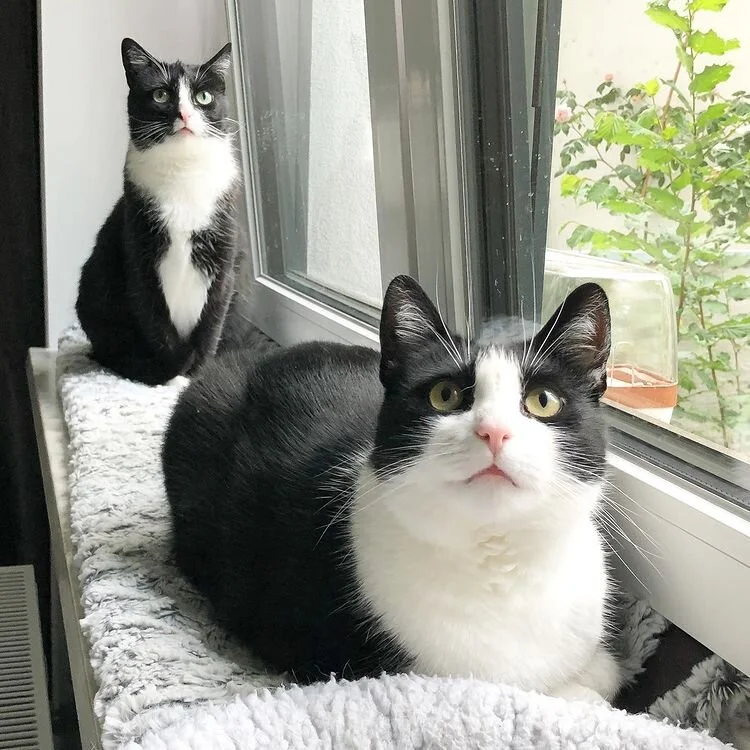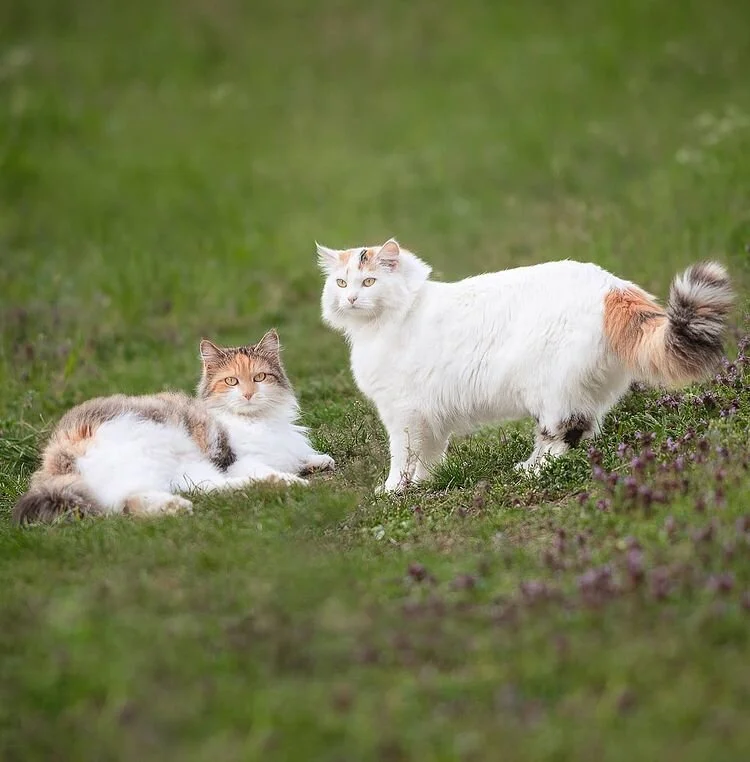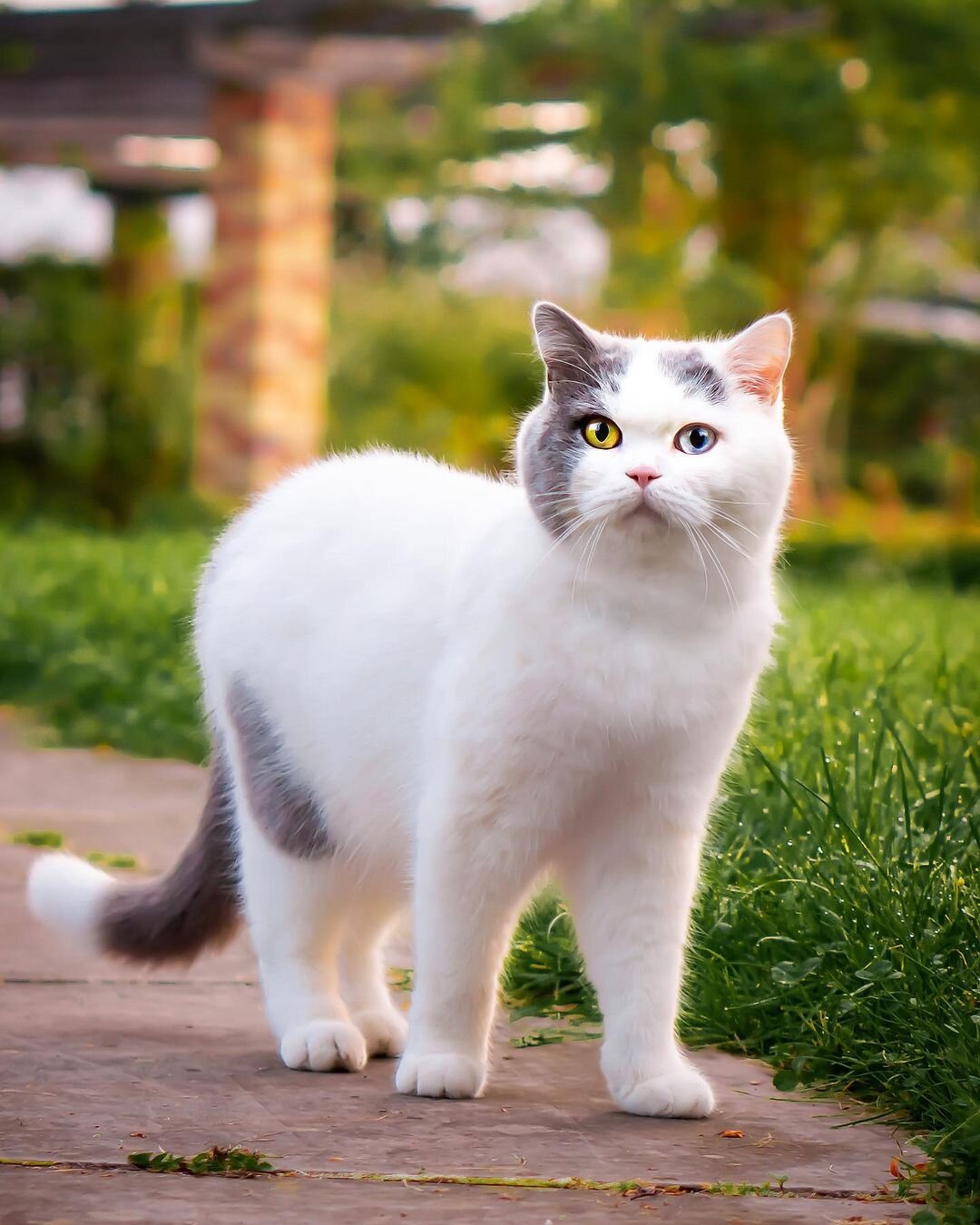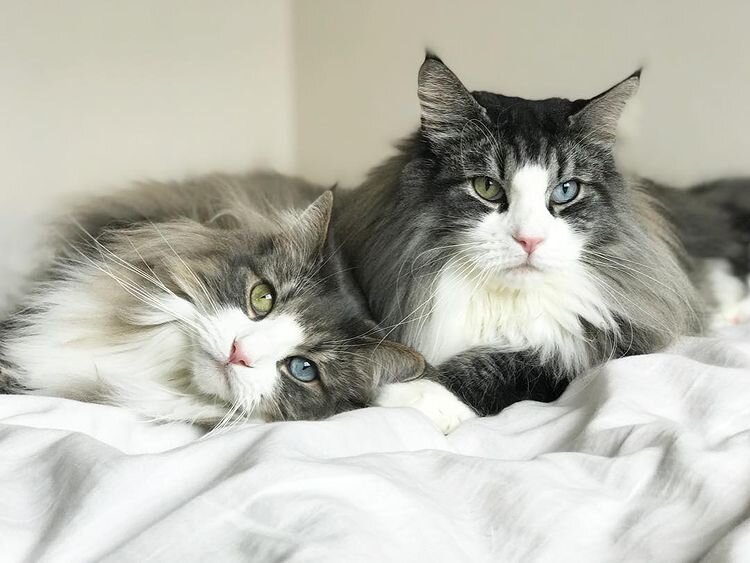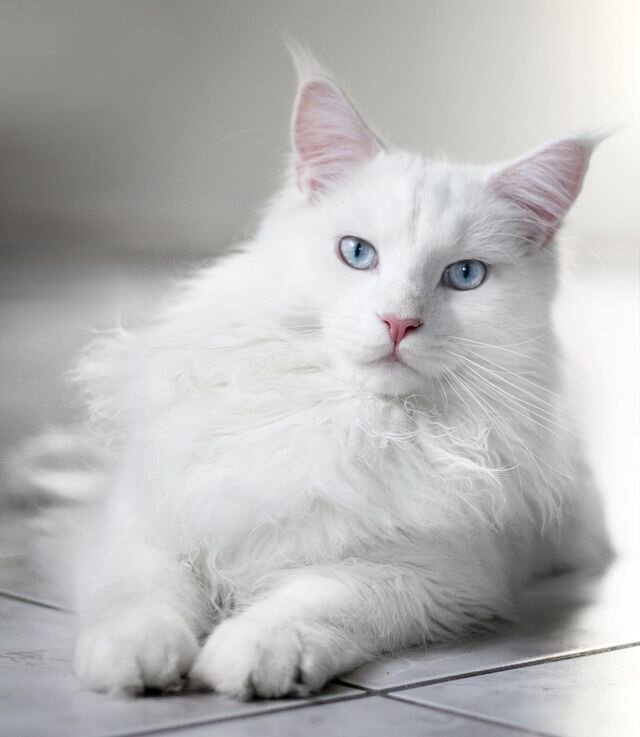Cat coat: white cats and white spotting
What's the color of your cat? To answer this question, in this fifth article in my series on cat coats I'm going to talk about white cats and piebald cats and explain everything about their genetics!
Note: Before reading this article, I recommend you read the first article in the series on solid cat colors, as some of the genetic explanations will be useful to understand this article.
The previous articles in the series covered:
White spotted cats
White spotted cats, also called piebald or bicolor, are simply cats with any quantity of white on them but that aren’t entirely white! The white spots can be limited to a locket on the chest or just some white mittens, up to an almost entirely white cat except for its ears and tail.
The rest of the cat coat can be of any of the color and pattern combinations that we have seen in the previous article. In a way, you could say that white is an absence of color that “erases” the normal color of the cat.
If the cat’s nose or paws are covered by a patch of white, the leather color will be pink. When an eye is covered by a white patch, it may cause that eye to be blue. That’s why most odd-eyed cats are white or have white spots.
Generally, cats with any amount of white are called by their base color plus “with white” when the amount of white is not specified.
Blue tortie and white, also called dilute calico from @cocoandfrits
Tortie cats which also have white are often called “calico”. Generally, the more white a tortie cat has, the more the patches of black fur and red fur are separated.
Some breeds have specific names for the color repartition and specific color repartition such as the Ragdoll, Snowshoe, or Turkish Van.
Mitted
Mitted cats, sometimes called gloved, only have white on their paws like if they were wearing white socks.
White cats pattern from [1]
Bicolor
Cats are called bicolor when they have a white area that covers between 40 to 60% of their body. Generally, the white parts of a cat’s coat are located on the legs, belly, chest, and face, partially going up to the back. Other colloquial names sometimes used for bicolor cats based on their color repartition can be “tuxedo”, "cap-and-saddle", and "mask-and-mantle"
Two black and white cats, also called “Tuxedo“ cats from @2chaoscats
Harlequin or High White
In most pedigree registries, cats that are between 60 to 80% white are called Harlequin or, sometimes, “high white”. Generally, a Harlequin cat is colored only on the head, tail, and a few patches of color on the back and body.
Black tortie tabby and white cat and a Black tortie tabby van cat from @mausi.meow
Van
Cats which body is covered in white for more than 80% are generally called “van white”. In this case, the only non-white parts are the ears and the tail, which can make it difficult to identify the base color of the cat.
White cats
White cats are simply cats which are entirely white, without any markings. Their nose leather and toe beans are pink. The eye color can be blue, green, copper, golden, odd-eyed...
White cats, and in particular white cats with blue eyes, are prone to deafness. In the case of an odd-eyed cat with one blue eye, the ear on the side of the blue eye can be the deaf one. This phenomenon will be explained below in the genetics paragraphs.
White cats should not be confused with albino cats! Albinos are much rarer and are genetically different from white cats, even if they look similar. You can find more information on albino cats in the article on point coloration.
Blue van odd eyed cat from @gokisdiary
White and genetics
White spotted & White
The white and white spotting phenotypes are linked to the same locus W of the KIT gene. The KIT gene is associated with the white color in many animals.
There are 3 possible alleles in this locus: W, ws, and w.
The fully white or white dominant ("W"), is dominant to the other alleles and to any other color gene. In fact, the white gene hides the effect of any other color gene: it's epistatic!
The "ws" allele is responsible for white spots and is codominant with the allele w for a cat without white spots.
So, if a cat is W/W, W/ws, or W/w, it will be entirely white, no matter all the other color genes.
As the white spotting allele ws is codominant with the non-white spotting, if a cat is ws/w, it will have white spots but covering a smaller area of its coat when compared to a homozygous ws/ws. Generally, it seems that homozygous cats have more than half of their body covered in white, while heterozygous have less than half. Then, some additional polygenes may influence this quantity of white and its repartition.
Finally, a cat that is w/w won’t have white spots and will have a solid coloration.
These three different alleles can genetically be tested.
As mentioned before, the allele ws is the main one causing white spots. But it’s not the only one! White spots are not simple and are caused by several genes, some still being unknown.
It seems that the minimal white spotting such as the locket is linked to another gene. Similarly, some polygenes may control the white repartition as some breeds manage to relatively control the white spots like in the Ragdoll breed.
Blue silver tabby and white cat, and black silver tabby and white cat from @pompapompapompa
Mitted
The locus responsible for the gloved patterns has been identified in the Birman breed. As for the white and white spotting, this locus is also located on the KIT gene and it’s recessive. If a cat is homozygous for the gloved allele g (i.e. g/g), it will be mitted. Otherwise, if it is g/N or N/N, with N being the non-gloved allele, it won’t be mitted. This allele can genetically be tested.
This gene has been found in other breeds such as the Ragdoll and Maine Coon and may be spread into the cat population. However, like for the lockets, it seems that other genes may also cause gloved markings, as some mitted Ragdolls don’t have this allele.
Seal point mitted Birman from @jawothecat
White color and deafness
You may have heard (pun not intended) that all white cats with blue eyes are deaf, or at least the majority of them. Let’s take a look at why this is genetically the case.
The white color is an absence of any pigment in the hairs or in the skin. In fact, the effect of the white spotting or dominant white gene is to block the development of pigment-producing cells in the womb, resulting in pink skin and white hairs. Similarly, blue eyes are also an effect of the absence of pigments in the eye, caused by the white spotting or dominant white gene that affects the eye cells in the womb.
Likewise, if the white spotting or dominant white gene affects the cells of the ear, it can cause loss of hearing! When the fetus is developing in the womb, the ear and the eye cells are very close to each other so, if the eye is affected, the ear is likely to be affected too!
A study published some statistics on the incidence of deafness in white cats: around 70% of white cats with two blue eyes, 40% of white cats with one blue eye, and around 20% of white cats without blue eyes were deaf.
The deafness can be unilateral (it affects only one ear) or bilateral (both ears are affected): when the deafness is unilateral, it is often not noticed by the owner, as the cat will behave normally.
Non-deaf white cat with blue eyes from @nala_whitemainecoon
When white cats were studied without taking into account the eye color, researchers found that between 20 to 50% of the white cats had hearing impairment (deaf or partially deaf).
Finally, in a study that took into account the genotype of the cats, all the W/W cats had some degree of hearing impairment and 73% of them were entirely deaf. Comparatively, 66% of the W/ws cats had some hearing impairment or were deaf. Lastly, 37% of the W/w cats had some hearing impairment or were deaf.
So, while not all white cats with blue eyes are deaf, they are more likely to be. This explains why two white dominant cats shouldn’t be bred together, as some of the offspring may be homozygous for W/W and very likely to be deaf. Similarly, breeding white dominant cats should always be done very carefully, with all cats and kittens being tested (BAER test) for deafness. Moreover, it seems that white dominant cats should preferably be bred with cats that do not present any white spots.
So, here is everything you need to know about white cats, white spotted cats, and their genetics. In the next article I will talk about the silver and smoke cats: stay tuned to know more about cat furs!
Sources
[1] David VA, Menotti-Raymond M, Wallace AC, et al. Endogenous retrovirus insertion in the KIT oncogene determines white and white spotting in domestic cats. G3 (Bethesda). 2014;4(10):1881-1891. Published 2014 Aug 1. doi:10.1534/g3.114.013425
[2]Strain GM. The Genetics of Deafness in Domestic Animals. Front Vet Sci. 2015;2:29. Published 2015 Sep 8. doi:10.3389/fvets.2015.00029
Other article on cat coat
Solid cat colors
Torties and red cats
Tabby cats
Point colorations
Silver and smoke cats
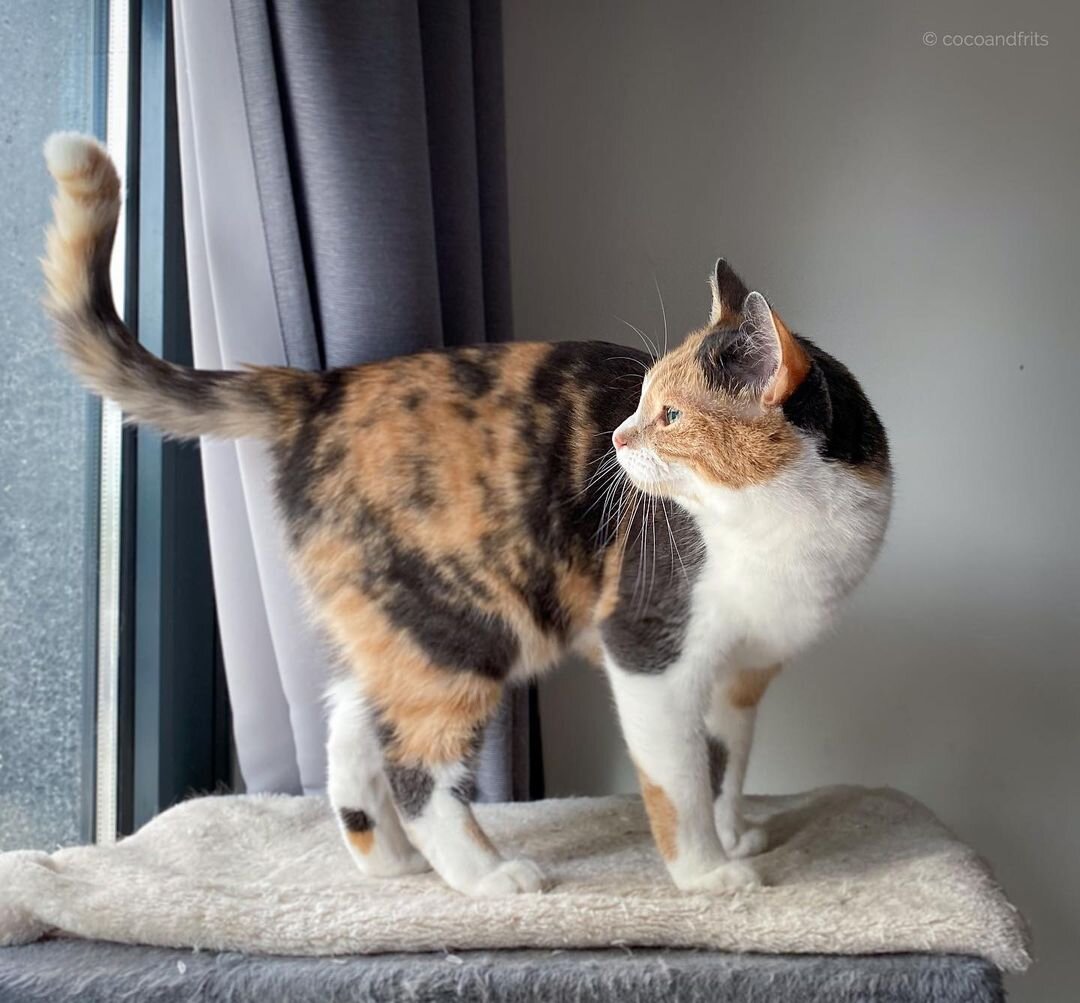
![White cats pattern from [1]](https://images.squarespace-cdn.com/content/v1/5e8a2944d7ce562e250eb009/1606863024894-JSF5DH3M28ZEFL8EIZJG/white+patterns)
